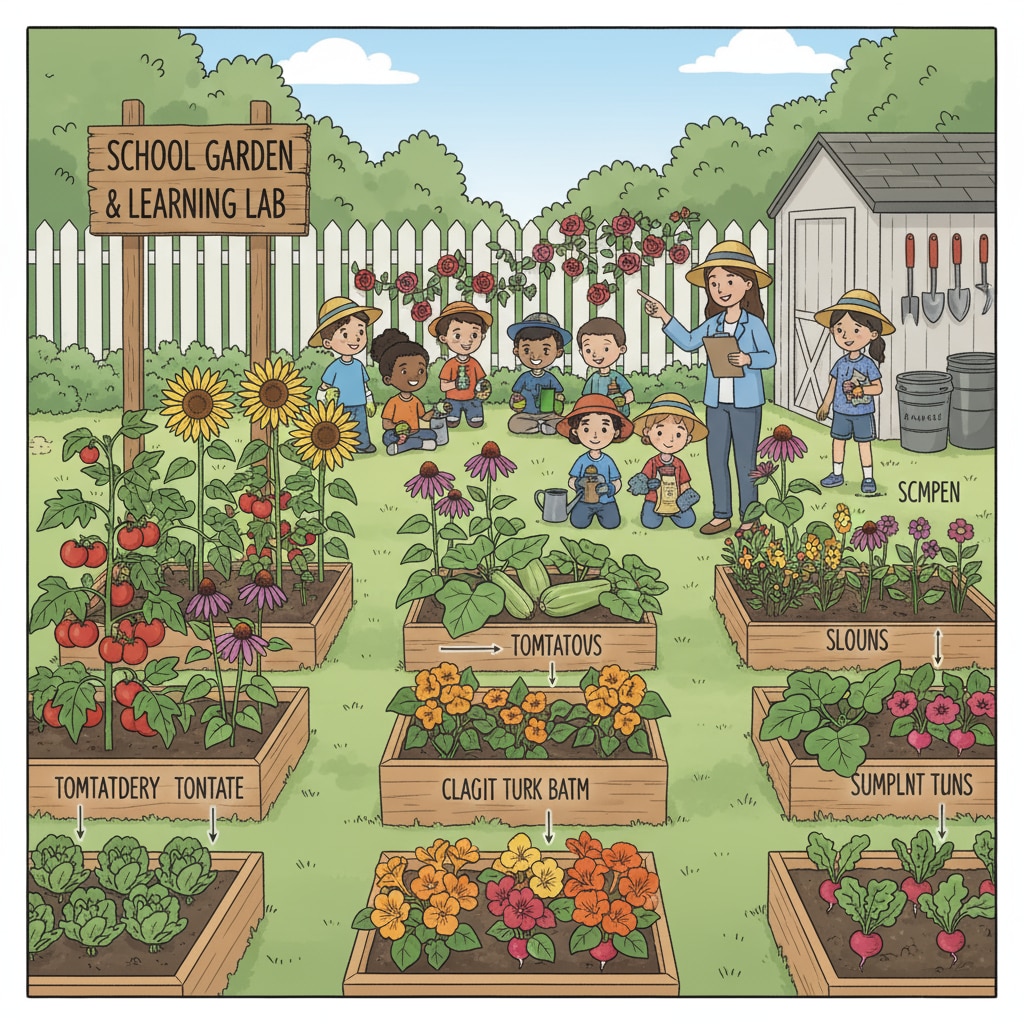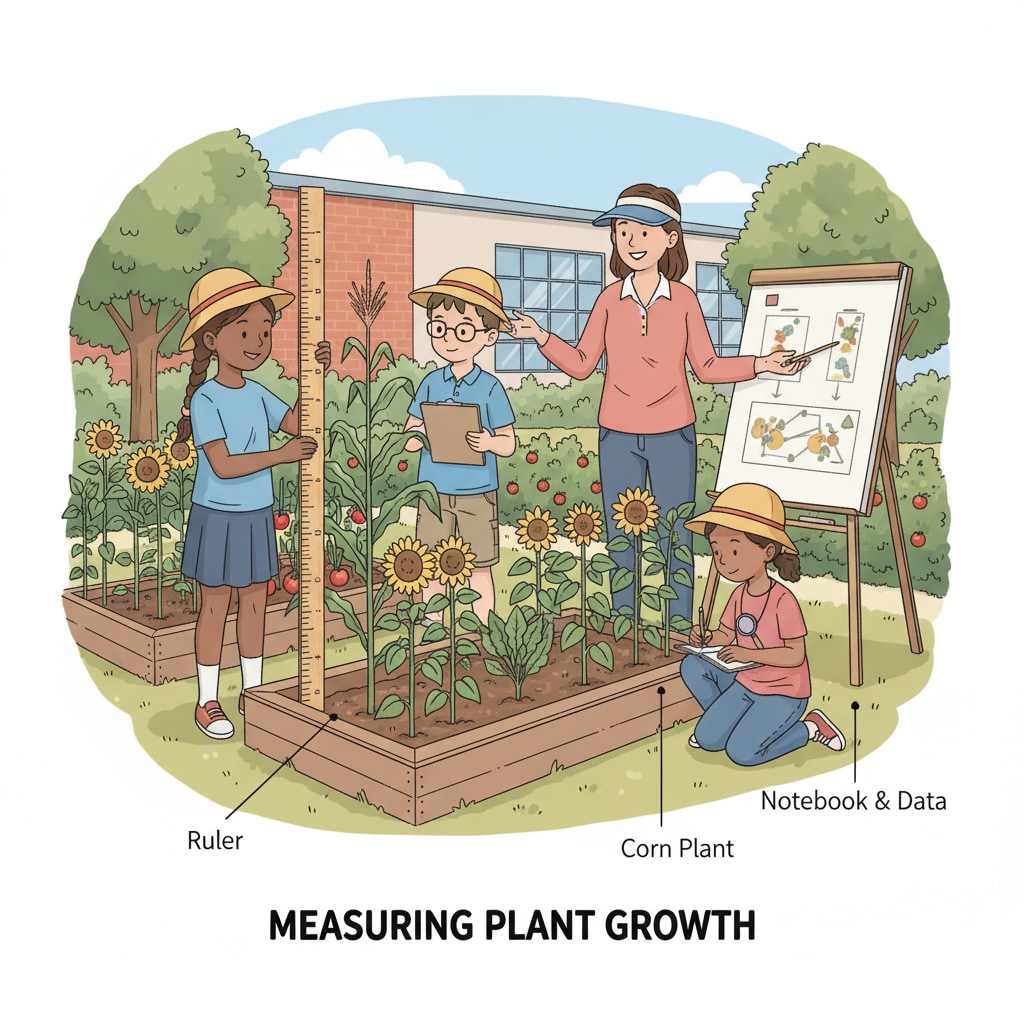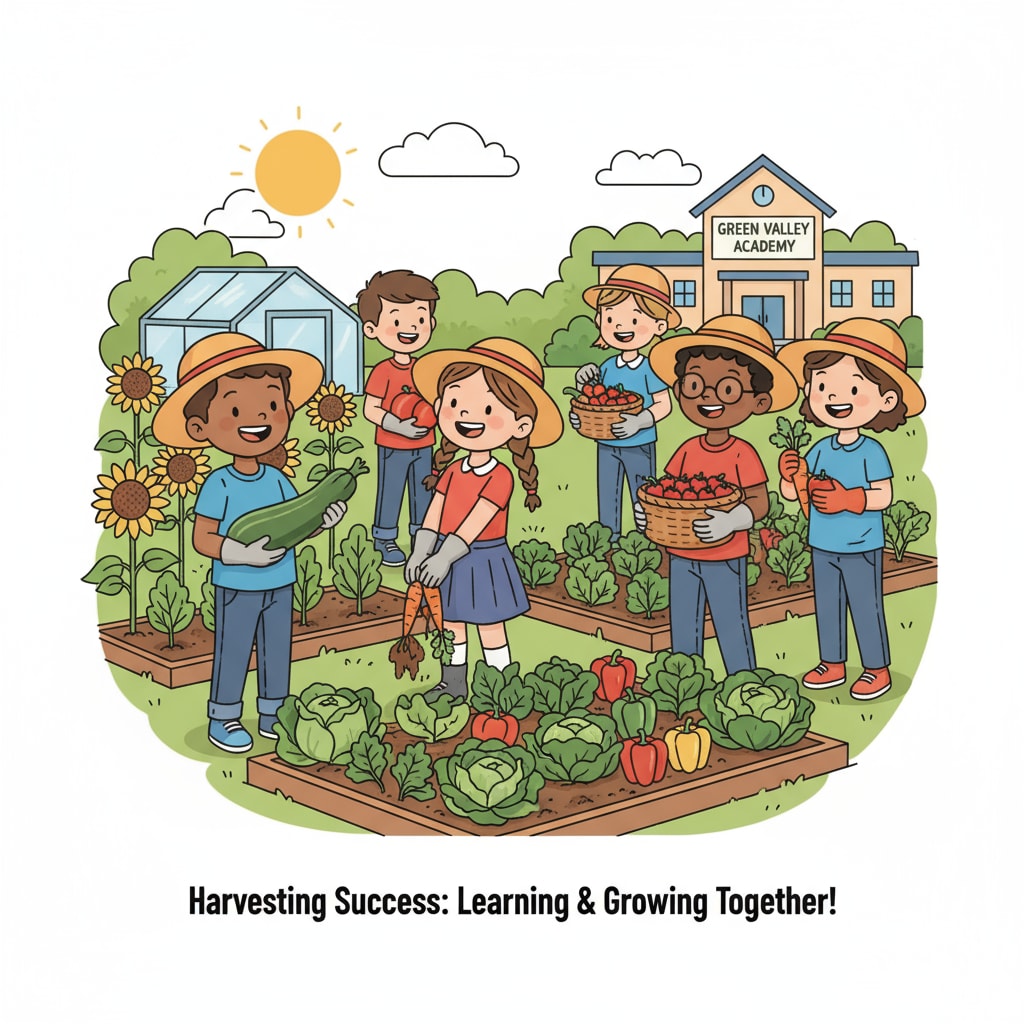School gardens, educational tools for practical learning, are far from being mere patches of greenery on school grounds. They have the potential to transform the way students learn, offering a multi – faceted educational experience that goes beyond the traditional classroom setting.

The Academic Advantage of School Gardens
School gardens provide a fertile ground for academic growth. For example, in science classes, students can study plant life cycles firsthand. They can plant seeds, observe germination, growth, and reproduction, which is a much more engaging way than reading about it in textbooks. According to Britannica’s education resources, hands – on learning experiences like these improve understanding and retention of knowledge. In math, students can calculate the area of the garden beds, measure the growth rate of plants, and manage budgets for garden supplies. This real – world application of math concepts makes learning more relevant and memorable.

Social and Emotional Development in the Garden
In addition to academics, school gardens play a crucial role in social and emotional development. Working together in the garden encourages teamwork and cooperation among students. They have to divide tasks such as watering, weeding, and harvesting. This shared experience builds communication skills and a sense of community. Moreover, being in a natural environment has a calming effect on students. Spending time among plants can reduce stress and anxiety, as noted by research on the benefits of nature exposure in educational settings.
Furthermore, the garden can be a place for students to express themselves. They can design their own small plots, choosing the plants they like, which boosts creativity and self – confidence. As students take care of the garden over time, they also develop a sense of responsibility and patience, seeing the long – term results of their efforts.
Readability guidance: Each section here focuses on a different aspect of how school gardens function as educational tools. The paragraphs are short, and we’ve used examples and references to make the content more accessible. Transition words like ‘for example’ and’moreover’ help connect ideas.
Health Benefits of School Gardens
School gardens contribute significantly to students’ health. The physical activity involved in gardening, such as digging, planting, and weeding, gets students moving. This is an excellent way to combat sedentary lifestyles. Additionally, students can learn about healthy eating as they grow their own fruits and vegetables. They are more likely to try new, nutritious foods that they have grown themselves. As per CDC’s information on school gardens and health, school gardens can be an effective strategy to promote healthy behaviors among students.
Fostering Environmental Awareness
School gardens are also powerful tools for cultivating environmental awareness. Students can learn about biodiversity as they observe different plants and insects in the garden. They can understand the importance of pollinators and how to create a habitat for them. By composting food scraps from the school cafeteria, students can learn about waste management and the circular economy. This hands – on learning about environmental issues instills a sense of stewardship in students, motivating them to take action to protect the environment in their daily lives.
In conclusion, school gardens, as important educational tools for practical learning, offer a wealth of benefits in multiple areas. They enhance academic performance, promote social and emotional well – being, improve health, and foster environmental awareness. Educators should recognize the untapped potential of these school gardens and incorporate them more fully into the K12 curriculum.

Readability guidance: The conclusion sums up the main points about how school gardens are valuable educational tools. Short paragraphs and clear language are used to ensure easy comprehension. Transition words like ‘in conclusion’ help signal the end of the discussion.


